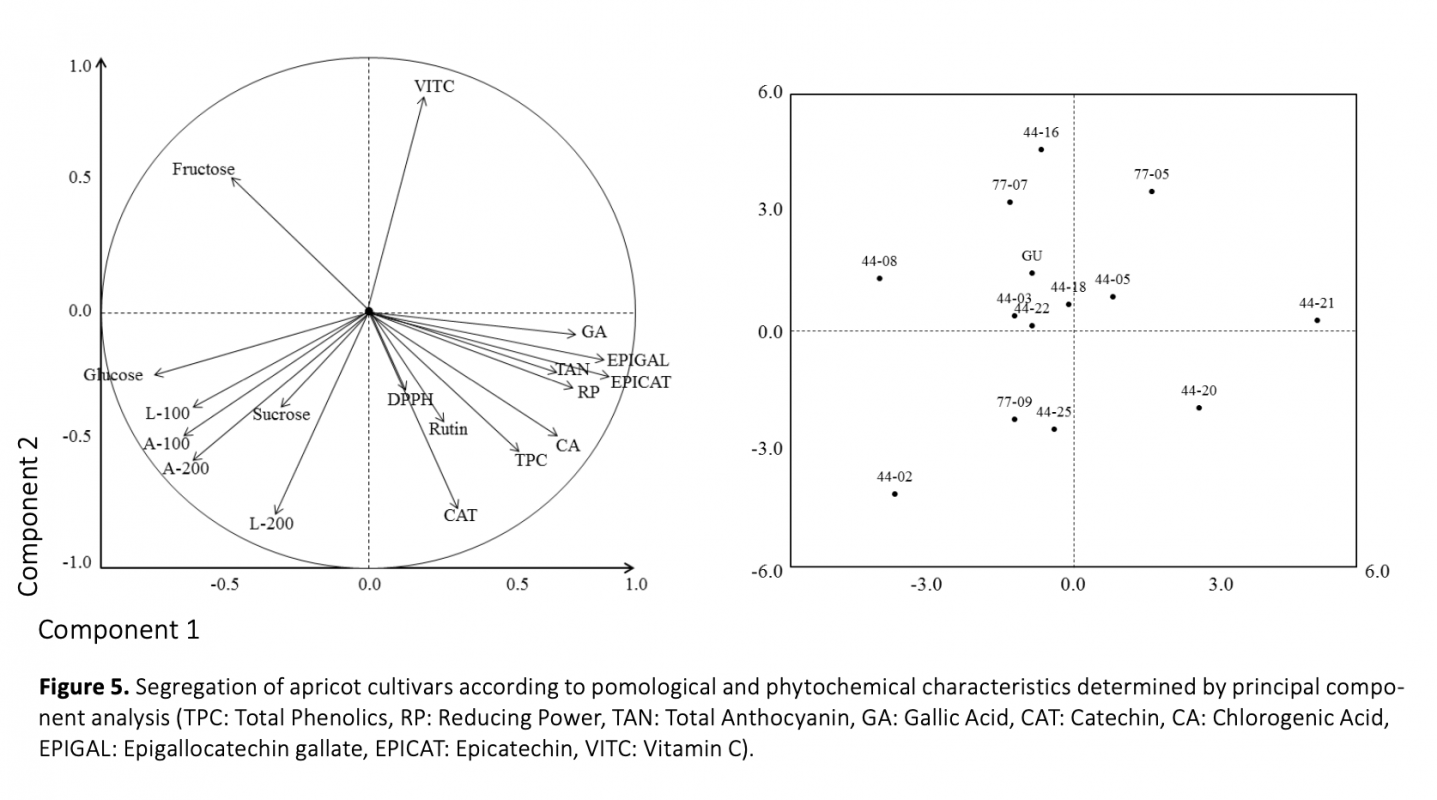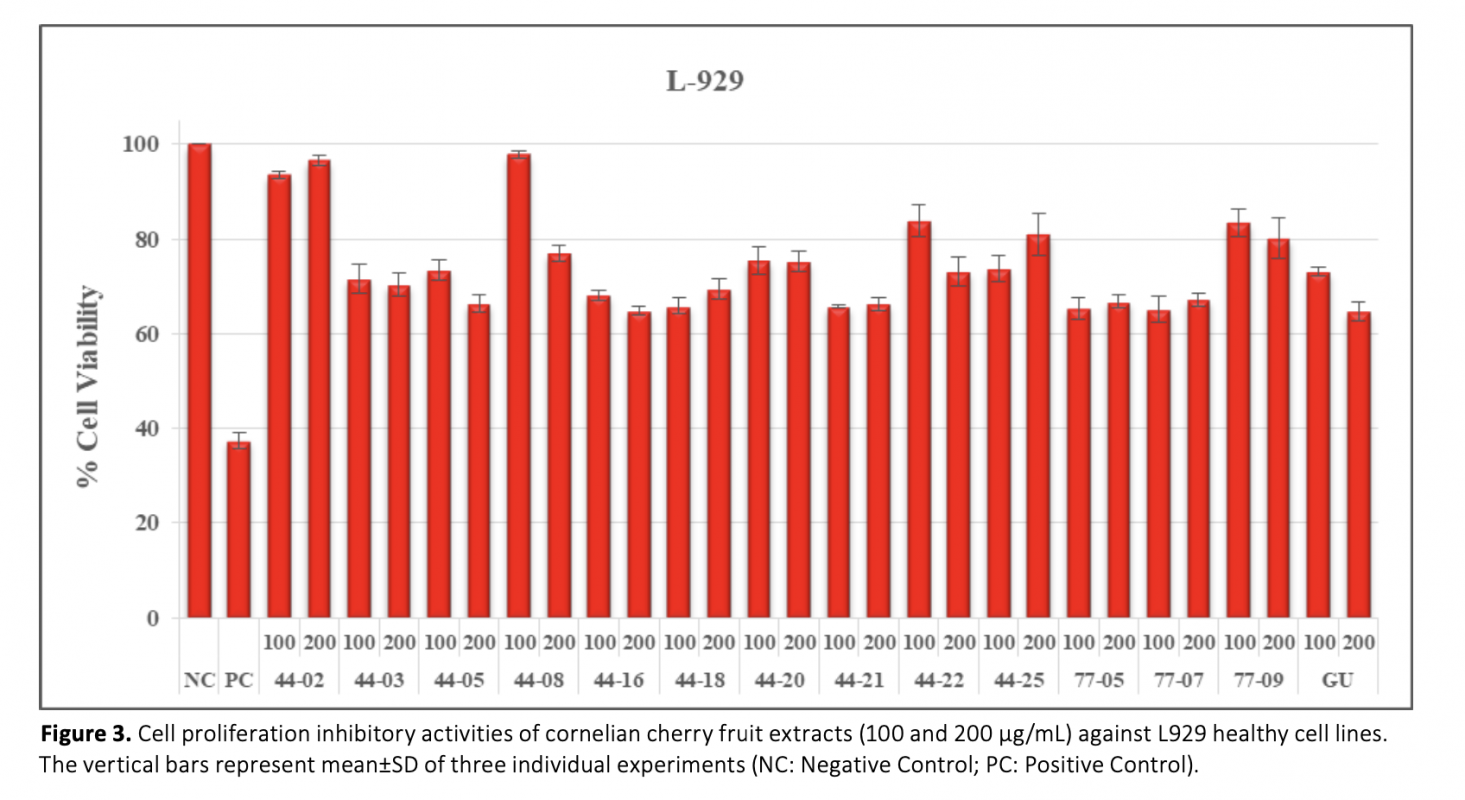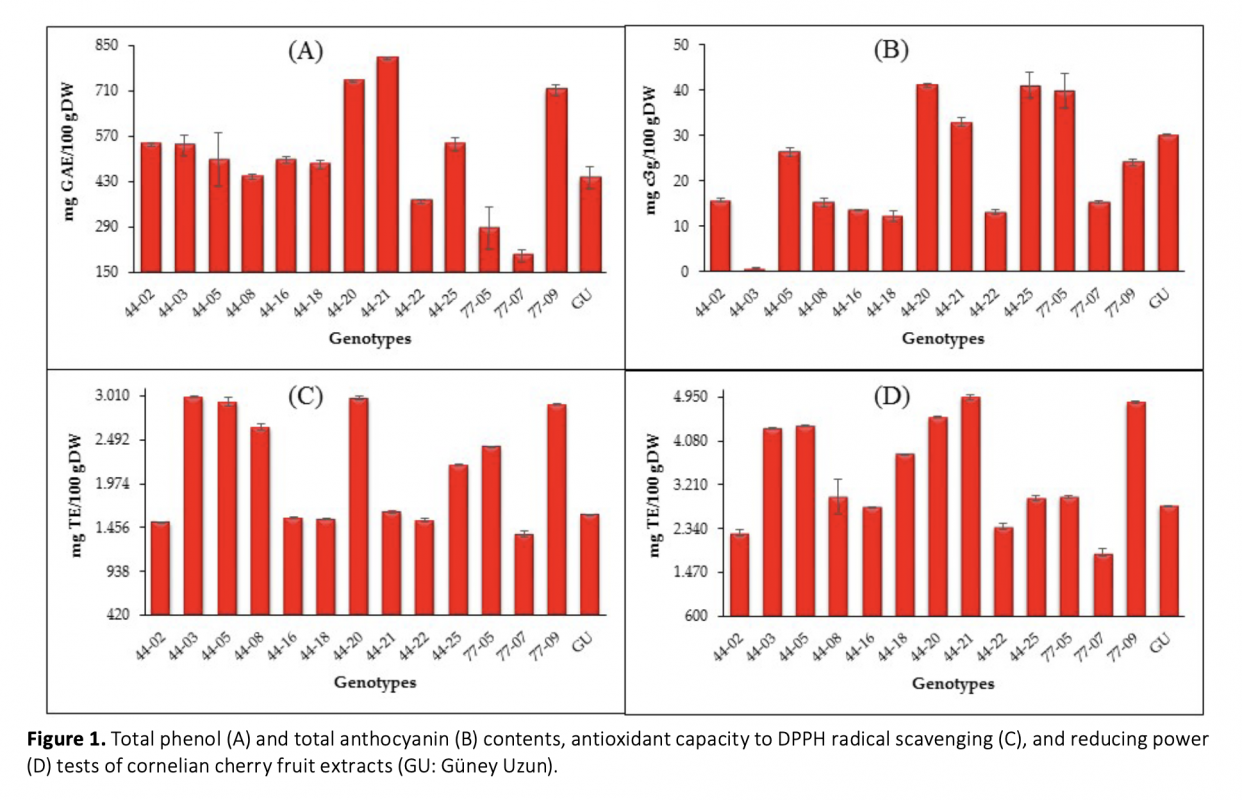The aim of this study was to investigate the chemical composition (vitamin C, phenolic, and sugar compounds), the cytotoxic effect on healthy (L-929) and lung cancer (A-549) cells, and the antioxidant capacity of fruits belong to thirteen cornelian cherry (Cornus mas L.) genotypes grown under the same conditions in Turkey. Fruit samples were extracted by the ASE technique. The chemical composition was analyzed by HPLC-DAD-RID. A reversed-phase Clipeus C18 reversed-phase column (250 mm × 4.6 mm, 5 μm) were used. For gradient elution mobile phase A contained 4.5 % acetic acid in water; solution B acetonitrile were used as mobile phase with flow rate 1.0 mL/min. Antioxidant capacity, total phenolic, and total anthocyanin content were determined using spectrophotometric methods. Cytotoxic effects were evaluated by MTT assay in L-929 and A-549 cell lines for 48 h. No toxic effect of the fruit extracts was observed on L-929 healthy mouse fibroblast cells, while it was determined to reduce cell proliferation (approximately 50%) on A-549 lung cancer cells. The featured genotypes were 44-03, 44-20, 44-21, 77-09, and 44-21, 44-16, 77-05, respectively. The featured genotypes for antioxidant capacity and cytotoxic effects on A-549 cells were 44-03, 44-20, 44-21, 77-09, and 44-21, 44-16, 77-05, respectively. The results have brought out that there are significant differences between the genotypes (p ≤ 0.05) and cornelian cherry fruits have a significant antioxidant capacity and potential for antiproliferative effects.
Bu çalışmanın amacı, kızılcık meyvelerinin kimyasal bileşimi (C vitamini, bireysel fenolik ve şeker bileşikleri) ve antioksidan kapasitesinin yanında, meyve ekstrelerinin sağlıklı (L-929) ve akciğer kanseri (A-549) hücreleri üzerindeki sitotoksik etkisini araştırmaktır. Türkiye'de aynı koşullarda yetiştirilen on üç kızılcık (Cornus mas L.) genotipi meyve örnekleri ASE tekniği ile optimum koşullarda ekstrakte edildikten sonra kimyasal bileşim, HPLC-DAD-RID ile analiz edildi. Clipeus C18 ters faz kolonu (250 mm x 4.6 mm, 5 um) kullanıldı. Gradiyen elüsyon uygulanarak yapılan belirlemede dakikada 1 ml akış oranında, mobil faz olarak solvent A: %4,5 asetik asit solüsyonu ve solvent B: asetonitril kullanıldı. Antioksidan kapasitesi, toplam fenolik ve toplam antosiyanin içeriği spektrofotometrik yöntemler kullanılarak belirlendi. Sitotoksik etkiler, 48 saat boyunca L-929 ve A-549 hücre hatlarında MTT testi ile değerlendirildi. Meyve ekstraktlarının L-929 sağlıklı fare fibroblast hücreleri üzerinde toksik etkisi gözlenmezken, A-549 akciğer kanseri hücrelerinde hücre proliferasyonunu (yaklaşık %50) azalttığı belirlendi. A-549 hücreleri üzerindeki antioksidan kapasite ve sitotoksik etkiler için öne çıkan genotipler sırasıyla 44-03, 44-20, 44-21, 77-09 ve 44-21, 44-16, 77-05 olduğu belirlendi. Elde edilen sonuçlar, genotipler (p ≤ 0.05) arasında önemli farklılıklar oldu- ğunu ve kızılcık meyvelerinin önemli bir antioksidan kapasiteye ve antiproliferatif etki potansiyeline sahip olduğunu ortaya koymuştur.




Download Article in PDF (1.0 MB)